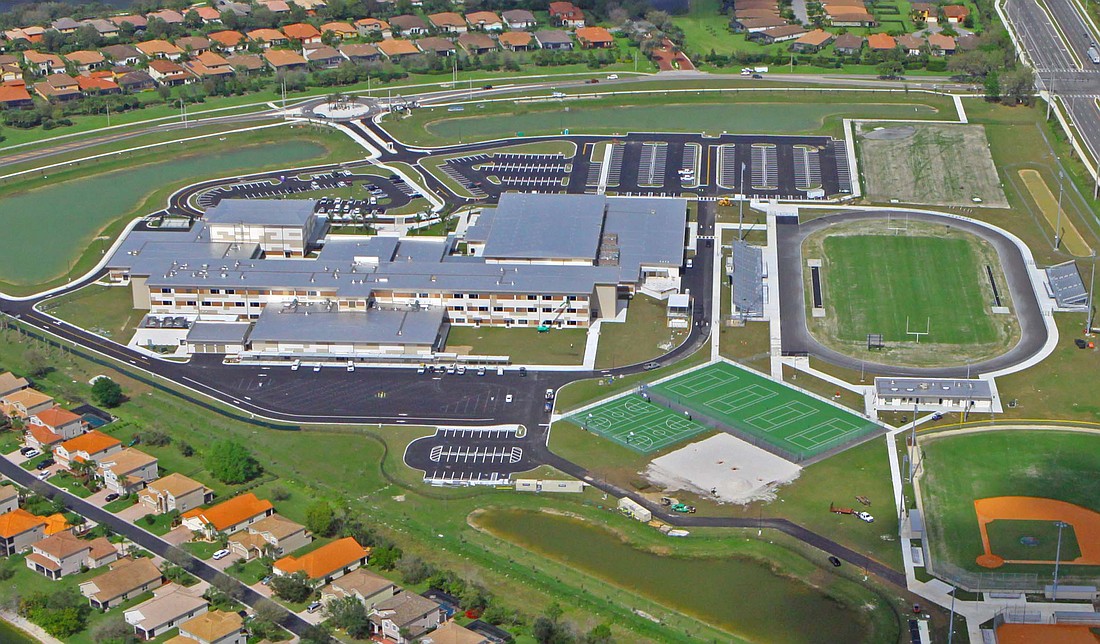- July 26, 2024
-
-
Loading

Loading

Josh Christensen, the general manager for the west coast region for Suffolk, thought he and his team communicated with each other pretty well prior to the pandemic. With some $1.8 billion of construction work in various stages, knowing what’s what on projects, from Tampa to Naples, is a key part of his day.
But the pandemic pushed his team to new heights. “We’ve communicated better,” he says. “When this first started happening, as an executive group we met every single day, if not multiple times a day, to feel our way through this. That enhanced level of communication has stuck. That’s been a silver lining — we’re communicating way better and more efficient than before.”
Boston-based Suffolk, with $4 billion in annual revenue and 2,500 employees in 10 core markets from San Diego to West Palm Beach, is a big player in the region’s construction scene. The division’s projects include Gateway High School in Fort Myers; pre-construction on a 45-story condo tower in downtown St. Petersburg; and multiple buildings at Moorings Park, a retirement community in Naples.
Christensen, who has been with Suffolk since 2014, after stints with large builders Gilbane and W.G. Mills, recently spoke with the Business Observer about how he has helped Suffolk navigate the pandemic.
How did you and the company react in the early days of the pandemic, mid-March 2020, in terms of crews, protocols and crisis management?
Right off the bat we took it very seriously. It probably cost us a little bit of time here and there and a little bit of money here and there, but as everyone was learning about the virus, we were learning while we had thousands of people on our job sites. We also realized very early on how important it was to make sure these job sites were safe because it was very important to the trade workers to have a site — they desperately wanted to continue working. It was incumbent on us to provide a safe job site for them to come to work.
What steps did you and the management team take to create a safe job site?
I felt like the job site was the safest place those workers were all day long. We had 100% masks all day and still do, we had distancing, and we were policing all of it with our superintendents. And our trade partners, the workers themselves, were policing each other when they realized, "Look if we get sick, we won’t be able to work." I really felt like there was a sense of community, and everyone was looking out for each other, both to keep people healthy and that they really wanted to work, especially the hourly workers.
How did the company create a socially distanced work environment in a setting designed to be collaborative — and crowded?
We spread out the workforce as much as we could in space and the times [they work]. We do workforce planning by trade, by area, everything else. We did a calculation of each area to figure out how many folks could be in there to be able to realistically social distance. We did those calculations and said, "OK, 20 people can be in the second floor, and five in this room, and five in this room, and 10 in this room." In some cases we put occupancy signs in the room. Worksites change on a construction site often, but in this case we really took some time to do workforce planning to lessen the concentration of people in the job site. We also offset some shifts, had people come in a little later or staggered shifts. That helped [crews] at the gate — when you have 500 people coming through the gate getting their temperature checked, it can get backed up.
Did any projects get shutdown or did any clients cancel work in the past year?
Out of the existing jobs under construction, only one totally stopped, and that was early on. A second one, [the Allegiant Sunseeker Resort in Charlotte County], stopped but will start again. The airline industry got hit very hard, right in the beginning of this. They had to stop nonessential expenditures. But they are fully committed to complete the project. A lot of the newer jobs, the starts of construction slowed down, mainly because there’s a lot of things shutdown, permitting agencies and things like that. There’s been a little bit of hesitation for some money to come off the sidelines and to get people comfortable that things would be OK. But so many people are moving into Florida — that’s really pumping the work.
How has the pandemic impacted costs for clients?
In the grand scheme of things, there are some costs, there are pennies on the dollar to take temperatures and to have someone there doing that and to clean and sanitize 10 times as much as you are used to and have all this enhanced communication. But it’s literally nothing compared to a shutdown. Those are catastrophic costs to a developer, to a contractor, to the workforce, to everyone involved. We are fortunate our clients understand that. Other parts of the country when job sites did shut down, that becomes a big thing to deal with.